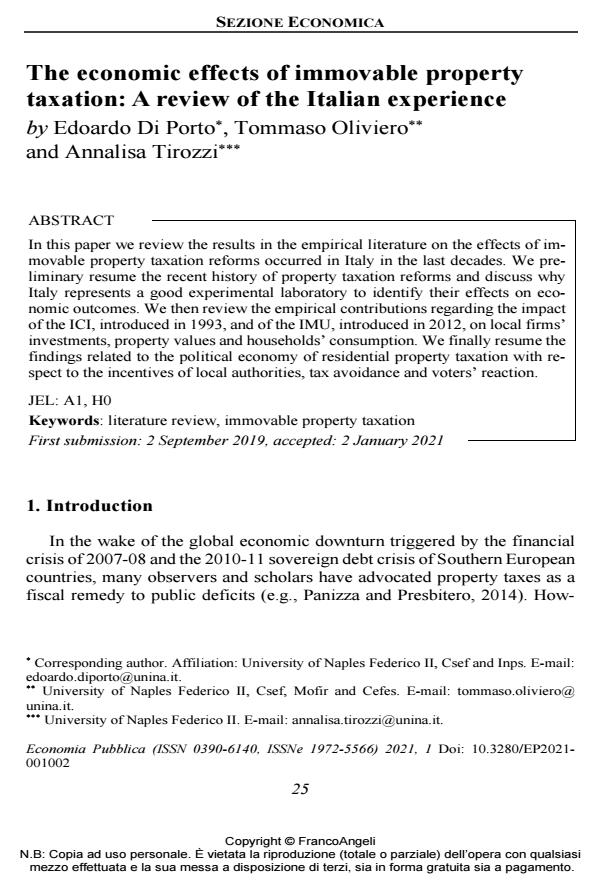The economic effects of immovable property taxation: A review of the Italian experience
Titolo Rivista ECONOMIA PUBBLICA
Autori/Curatori Edoardo Di Porto, Tommaso Oliviero, Annalisa Tirozzi
Anno di pubblicazione 2021 Fascicolo 2021/1
Lingua Inglese Numero pagine 19 P. 25-43 Dimensione file 923 KB
DOI 10.3280/EP2021-001002
Il DOI è il codice a barre della proprietà intellettuale: per saperne di più
clicca qui
Qui sotto puoi vedere in anteprima la prima pagina di questo articolo.
Se questo articolo ti interessa, lo puoi acquistare (e scaricare in formato pdf) seguendo le facili indicazioni per acquistare il download credit. Acquista Download Credits per scaricare questo Articolo in formato PDF

FrancoAngeli è membro della Publishers International Linking Association, Inc (PILA)associazione indipendente e non profit per facilitare (attraverso i servizi tecnologici implementati da CrossRef.org) l’accesso degli studiosi ai contenuti digitali nelle pubblicazioni professionali e scientifiche
In this paper we review the results in the empirical literature on the effects of immovable property taxation reforms occurred in Italy in the last decades. We preliminary resume the recent history of property taxation reforms and discuss why Italy represents a good experimental laboratory to identify their effects on economic outcomes. We then review the empirical contributions regarding the impact of the ICI, introduced in 1993, and of the IMU, introduced in 2012, on local firms’ investments, property values and households’ consumption. We finally resume the findings related to the political economy of residential property taxation with respect to the incentives of local authorities, tax avoidance and voters’ reaction
Parole chiave:Literature review, immovable property taxation First submission: 2 September 2019, accepted: 2 January 2021
Jel codes:A1, H0
Edoardo Di Porto, Tommaso Oliviero, Annalisa Tirozzi, The economic effects of immovable property taxation: A review of the Italian experience in "ECONOMIA PUBBLICA " 1/2021, pp 25-43, DOI: 10.3280/EP2021-001002